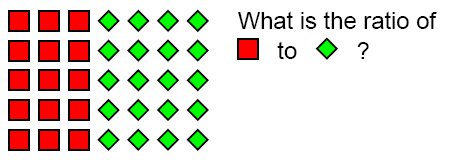 What is the order of operations with exponents? be sure to list them.
What is the order of operations with exponents? be sure to list them.
parentheses, exponents, multiplication and division from left to right, and addition and subtraction from left to right.
 What is the easiest way to find the unit rate?
What is the easiest way to find the unit rate?
Divide the denominator so it equals one then divide numerator by the same number.
 There are 6 Bubble Guppies and 8 Fish what ratio be if it was Bubble Guppies to Fish?
There are 6 Bubble Guppies and 8 Fish what ratio be if it was Bubble Guppies to Fish?
6:8
3:4
Both are acceptable answers
https://quizizz.com/join/quiz/604775f0b7ee10001b0da4e5/start?studentShare=true
20% of 990
198
 14-2x5=
14-2x5=
Use PEMDAS
4
 Does order of operations matter?
Does order of operations matter?
yes
 A speed boat can go 123 miles in 3 hours, how far can it go in 8 hours?
A speed boat can go 123 miles in 3 hours, how far can it go in 8 hours?
328 miles
 What compares things that are different?
What compares things that are different?
Rates
 10% of 210
10% of 210
21
 2+3x4+5
2+3x4+5
Use PEMDAS
19
What operation do you use when simplifying exponenets?
Multiply
How do u solve a unit rate problem?
write a set of equivalent fractions where one denominator equals 1
13% of 100
13
52 -23x3=
Use PEMDAS
1
What are the 3 sub-rules of PEMDAS? Be sure to list all.
first, simplify what is in parentheses. Then, do any exponents. Next, multiply and divide from left to right.
If kacy had 8 bags and each bag cost the same amount and one of her bags cost 68 dollars how much was her total?
544
Britney just got a new video game for her birthday. Yesterday, she played for 27 minutes and beat 3 levels. Today, her parents said she can play for 45 minutes.
If she beats levels at the same rate, how many levels should Britney beat today?
90% of 120

108
whats the 6 steps of order operation?
Do you multiply or divide first?
Neither, you do which operation is first in the expression.
How do u find the unit price?
dividing the total cost (also known as the retail price) by the weight or volume of the product.
The table shows how many hours Sara spent at several activities one Saturday.
Activity Hours Soccer: 2 Birthday party:3 Science project:1
What is the ratio of hours spent at soccer practice to hours spent at a birthday party?
2:3
25% of 64

16
What does Pemdas stand for?
Parentheses, Exponents, Multiplication and Division (same level), and Addition and Subtraction (same level).
